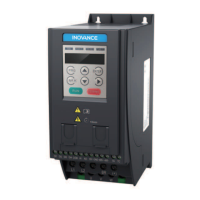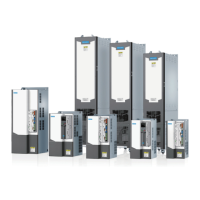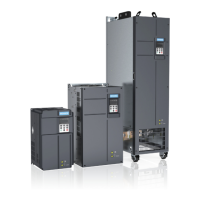Options
‑119‑
● The default initial braking voltages of built‑in braking units for the 380‑480 V
models and 200‑240 V models are 760 V and 350 V, respectively.
● The default initial braking voltage of the external braking units MDBUN‑60‑T,
MDBUN‑90‑T, and MDBUN‑200‑T is 670 V. These braking units apply to grids with
the input voltage lower than or equal to 440 VAC. The default initial braking
voltage of the external braking units MDBUN‑60‑5T, MDBUN‑90‑5T, and MDBUN‑
200‑5T is 760 V. These braking units apply to grids with the input voltage higher
than 440 VAC. You can adjust the initial braking voltage based on the grid voltage.
Higher initial braking voltage requires higher braking resistance.
● The data in the preceding table is only for reference. You can select the resistance
and power of the braking resistor as required. (Note that the resistance cannot be
lower than the recommended minimum value, whereas the power can exceed the
recommended value.) Select the braking resistor based on the generation power
of the motor in the actual system, system inertia, deceleration time, and potential
energy load.
● Larger system inertia requires shorter deceleration time and more frequent
braking. In this case, select a braking resistor with a higher power rating and lower
resistance.
● For details on how to install and use the MDBUN, see
MDBUN Series Braking Unit
User Guide
.
5.4.6 AFE Unit
The active front end (AFE) is an optional unit used to feed the energy generated by
the motor during braking back to the mains. With the AFE installed, the braking unit
and braking resistor are not required, which reduces heat emission. Inovance AFE
features energy efficiency, low noise, low harmonic wave, and high power factor.

